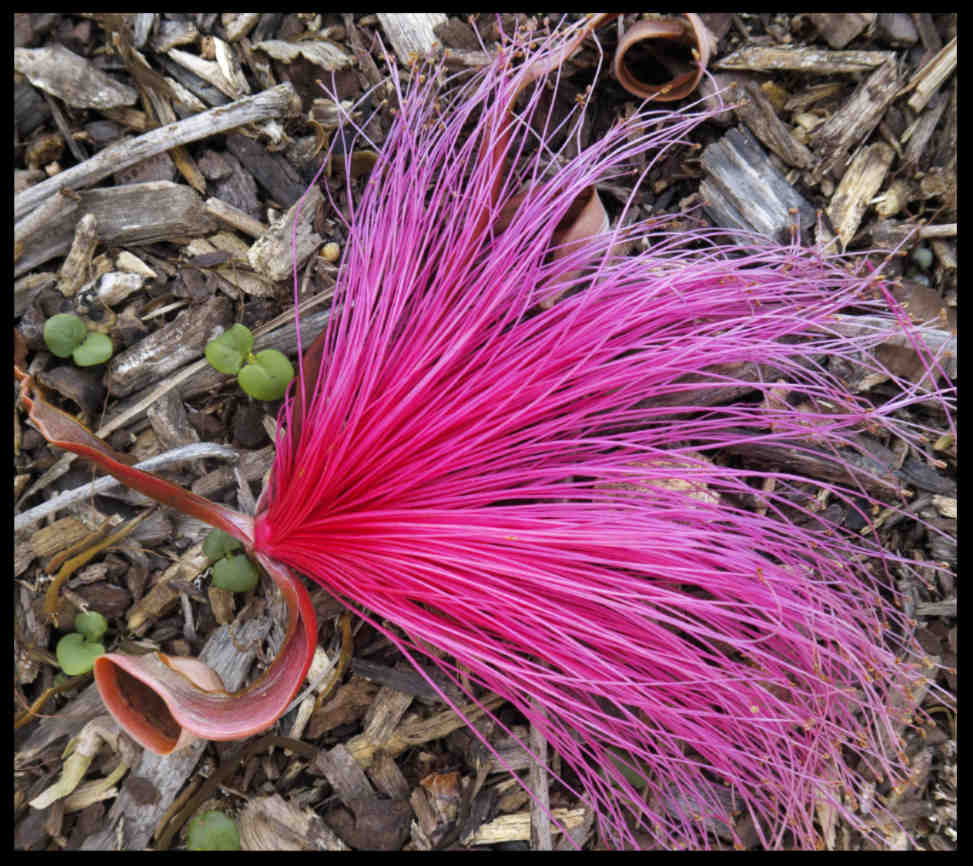Previously in Family Bombacaceae it is now in Family Malvaceae > Subfamily Bombacoideae.
A genus of 20 species from Mexico, Central/South America and the Caribbean.
There are a few shrubs but most are trees.
The trunk may be straight or the base swollen and spindle-shaped.
The greenish-grey bark may be smooth, have vertical fissures or sometimes spines.
New twigs usually have a waxy white coating or bloom.
The alternate palmate leaves are on a petiole.
Attached to its swollen end are 3 to 9 leaflets.
Leaflets are directly attached or on a stalk (petiolule).
Leaves fall in the cold months and flowers appear on the bare branches.
Inflorescences are a solitary flower or a small cluster of up to five.
They grow from the axils of leaf scars near the branch ends.
Each flower is on a stalk with 3 bracteoles that may fall off early.
The rim of the cup or bell-shaped calyx is flat or has 5 short lobes.
It increases in size around the developing fruit.
The 5 free petals are attached to the base of the stamen tube.
The fleshy oblong petals, with some hairs fall early.
There are many stamens with some flowers having over a thousand.
The filament bases are fused into a short stamen tube.
On its rim the filaments are loose or in bundles or 5, 10 or 15.
The ends of the single anther sacs curl back into a horse-shoe shape.
Anthers are dorsifixed and release yellow pollen outwards through a slit.
The superior ovary typically has 5 locules each with numerous ovules.
Ovules are attached to the winged central axis or columella.
The single long thin style has a small stigma that may have 5 tiny lobes.
Fruit are a slightly woody loculicidal capsule.
When the numerous seeds are released the columella remains.
Around the small seeds is a thick layer of whitish kapok-like fibres.
(True kapok is from the related Ceiba pentandra tree.)
J.F.


